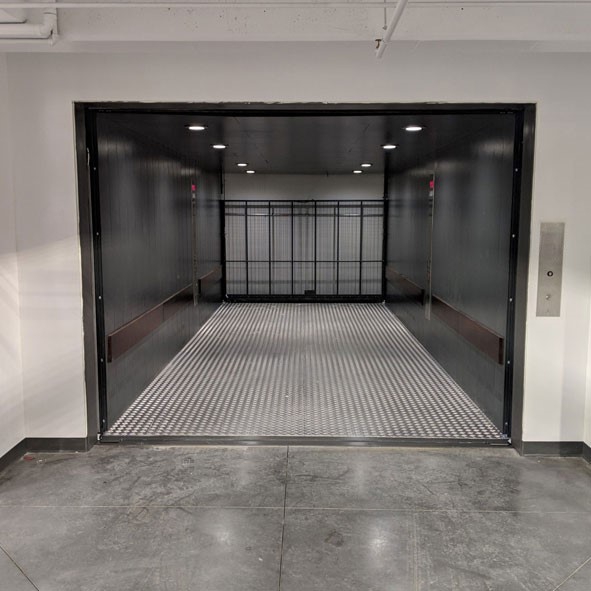Introduction to Car Elevators and Hydraulic Car Lifts
As urban areas grow denser, efficient parking and transportation solutions are becoming increasingly essential. Car elevators and hydraulic car lifts have emerged as innovative solutions to address space constraints and improve vertical mobility. These systems optimize space utilization, offering seamless transportation of vehicles between multiple levels, whether in commercial complexes, residential buildings, or automotive service centers.
What is a Car Elevator?
A car elevator is a vertical transportation system designed specifically to move vehicles between floors in a building. Unlike traditional elevators for people, car elevators are engineered to handle the size, weight, and specific requirements of automobiles. These systems are typically used in parking facilities, high-rise residential complexes, and automotive showrooms.
What is a Hydraulic Car Lift?
A hydraulic car lift operates using hydraulic systems to raise and lower vehicles. These lifts are highly versatile and are commonly used in parking systems, workshops, and garages. They rely on pressurized hydraulic fluid to create the force needed for vertical movement, ensuring smooth and reliable operation.
Types of Car Elevators and Hydraulic Car Lifts
1. Traction Car Elevators
These elevators use a counterweight and steel ropes to lift and lower vehicles. They are efficient for high-rise buildings and allow faster vertical travel.
2. Hydraulic Car Elevators
Powered by hydraulic cylinders, these elevators are ideal for mid-rise buildings and require less overhead space.
3. Scissor Lifts
A type of hydraulic lift with a crisscrossed support structure. These are compact and used for smaller-scale applications such as workshops.
4. Platform Lifts
Simple hydraulic systems designed to move vehicles vertically without enclosed walls, ideal for quick and easy parking transitions.
5. Multi-Level Car Lifts
Designed to stack vehicles on multiple levels, maximizing space utilization in parking garages.
How Hydraulic Car Lifts Work
Hydraulic car lifts rely on a system of hydraulic pumps, pistons, and fluid. Here's a breakdown of their operation:
-
Hydraulic Pump Activation:
The pump pushes hydraulic fluid into the cylinder. -
Piston Movement:
Pressurized fluid moves the piston, causing the lift platform to rise. -
Controlled Descent:
When lowering the vehicle, the fluid is released back into the reservoir, allowing the platform to descend smoothly. -
Safety Mechanisms:
Advanced safety features ensure stability, prevent overloading, and secure the vehicle during movement.
Advantages of Car Elevators and Hydraulic Car Lifts
1. Space Optimization
Car elevators and lifts allow efficient use of vertical space, significantly reducing the footprint needed for parking.
2. Time Efficiency
Vehicles can be quickly transported between floors, improving overall traffic flow in parking facilities.
3. Versatility
Hydraulic car lifts are suitable for diverse applications, from parking systems to vehicle maintenance.
4. Enhanced Safety
Equipped with advanced safety features such as emergency brakes, overload sensors, and anti-skid platforms.
5. Cost-Effectiveness
While the initial investment may be high, the long-term savings in space and operational efficiency outweigh the costs.
6. User-Friendly Design
These systems are easy to operate and often come with automated controls for seamless functionality.
Applications of Car Elevators and Hydraulic Car Lifts
-
Residential Complexes:
Facilitates parking in high-rise buildings with limited ground space. -
Commercial Parking Garages:
Optimizes vehicle storage in busy urban areas. -
Car Showrooms:
Enhances the display of vehicles on multiple floors. -
Automotive Workshops:
Hydraulic lifts are indispensable for vehicle repairs and maintenance. -
Hotels and Restaurants:
Provides premium valet parking solutions for guests.
Technological Innovations in Car Elevators
With advancements in technology, modern car elevators and lifts have become smarter and more efficient. Features include:
- IoT Integration: Enables real-time monitoring and remote operation.
- Energy-Efficient Systems: Reduces energy consumption through regenerative drives and low-power operation.
- Automated Systems: Fully automated car elevators streamline operations and reduce human intervention.
- Customizable Designs: Tailored solutions to meet specific architectural and operational needs.
Challenges and Considerations
-
Installation Costs:
High initial costs can be a barrier for smaller businesses or residential projects. -
Maintenance Requirements:
Regular maintenance is essential to ensure optimal performance and safety. -
Space and Structural Requirements:
Buildings need to be structurally designed to accommodate these systems. -
Load Capacity:
Overloading can affect the efficiency and lifespan of the lift.
Safety Features in Modern Hydraulic Car Lifts
-
Emergency Braking Systems:
Prevent accidents in case of mechanical failure. -
Overload Protection:
Sensors detect excessive weight and stop operations. -
Anti-Fall Mechanisms:
Ensures the platform remains stable even in power outages. -
Safety Rails and Barriers:
Protect vehicles and operators during operation. -
Automatic Leveling:
Aligns the platform with the floor to avoid uneven parking.
Environmental Benefits of Car Elevators
Hydraulic car lifts contribute to a greener environment by:
- Reducing Land Use: Maximizing vertical space reduces the need for expansive parking lots.
- Lowering Emissions: Automated systems minimize idling times, reducing vehicle emissions.
- Energy Efficiency: Advanced systems consume less energy, lowering carbon footprints.
Top Manufacturers of Car Elevators and Hydraulic Lifts
Several companies specialize in designing state-of-the-art car elevators and hydraulic lifts. Leading manufacturers focus on durability, efficiency, and customization to cater to diverse industry requirements.
Conclusion
The car elevator and hydraulic car lift are revolutionary innovations in vertical mobility and parking solutions. These systems not only optimize space utilization but also enhance convenience, safety, and operational efficiency. Whether for residential, commercial, or industrial use, they are indispensable tools for modern infrastructure.




